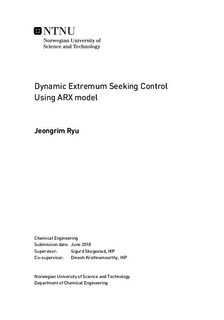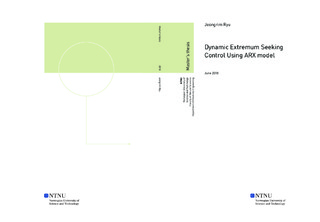| dc.description.abstract | In the design of the dynamic ESC, a wave perturbation is decided to be not a sinusoidal wave but a pseudo-random binary sequence(PRBS) wave. The reason behind this is that diverse frequencies in the PRBS wave make the ARX model to estimate the gradient more efficiently. Moreover, it turned out that the ARX model often has numerical spikes on the estimated gradient. This problem could be revised by combining the ARX model with the least square(LS) method and named as a Modified dynamic ESC.
With the newly developed control methods, three case studies with different plant models are performed. The first case study uses parallel heat exchangers with one split model and the second and third case studies are a single gas-lifted oil well and multiple gas-lifted oil wells respectively. The result obtained by the dynamic ESC is compared with that obtained by the classic ESC, verifying the superior performance of the dynamic ESC. Additionally, disturbances are applied and the systems are monitored to converge to a new optimal point. | |

